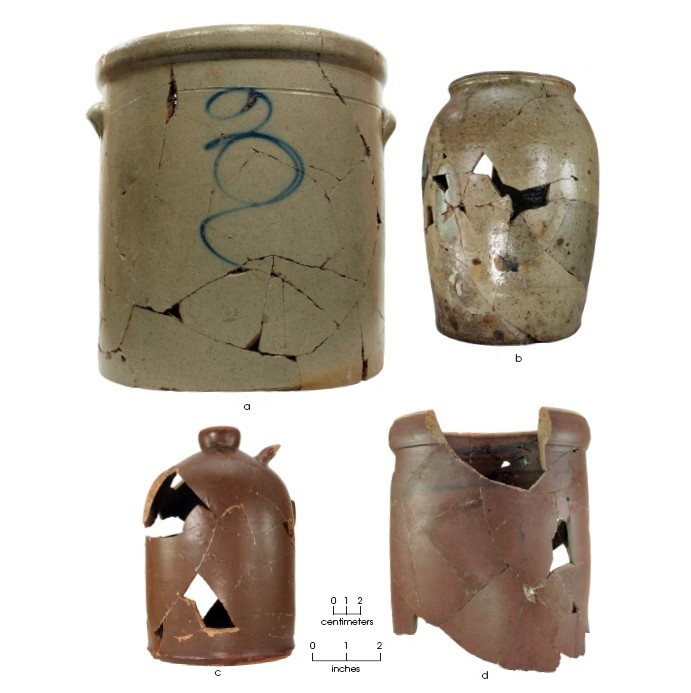
Of the 52 ceramic vessels, 22 are stoneware containers commonly used for storing and serving foods. The various forms indicate the vessels would have been used in a variety of tasks from pickling and preserving, different forms of food storage and service. The vessel forms include large and small cylindrical jars, a small handled jug, wide-mouth jar lids, and mineral water bottles. One can speculate that these vessels were used to store dry foods, cooked foods, and a variety of liquids.
The more complete stoneware vessels are shown in this photo: (a) a 3-gallon cylindrical stoneware jar with Albany-slip interior and salt-glaze exterior; (b) a 2-quart alkaline-glaze stoneware jar; (c) a 2-quart brown-slipped stoneware jug with a single loop handle; and (d) a brown-slipped stoneware jar, at least 1-gallon or larger.
The fact that many could be reconstructed suggests that these stoneware vessels were still within the house as it fell into ruins and collapsed. This information helped PAI archeologists understand some aspects of the abandonment process at the Williams farmstead.